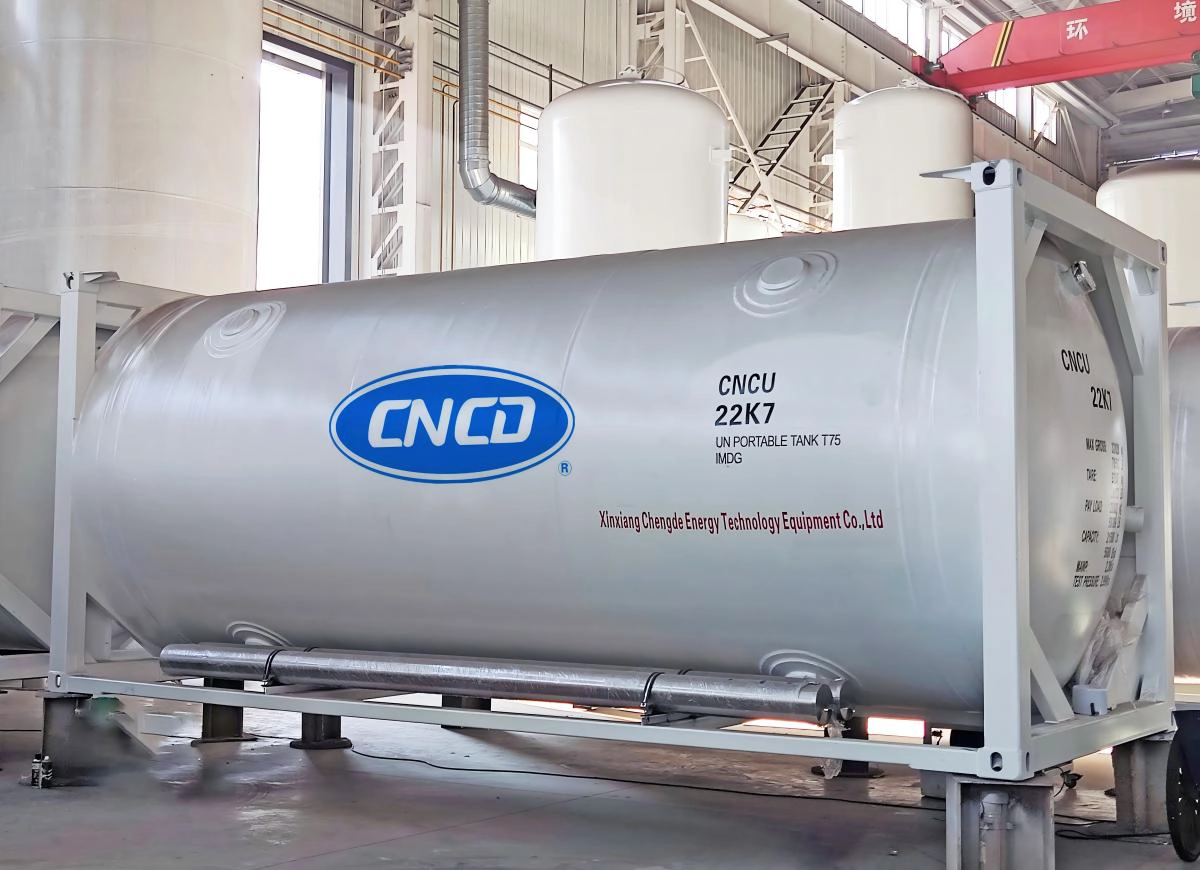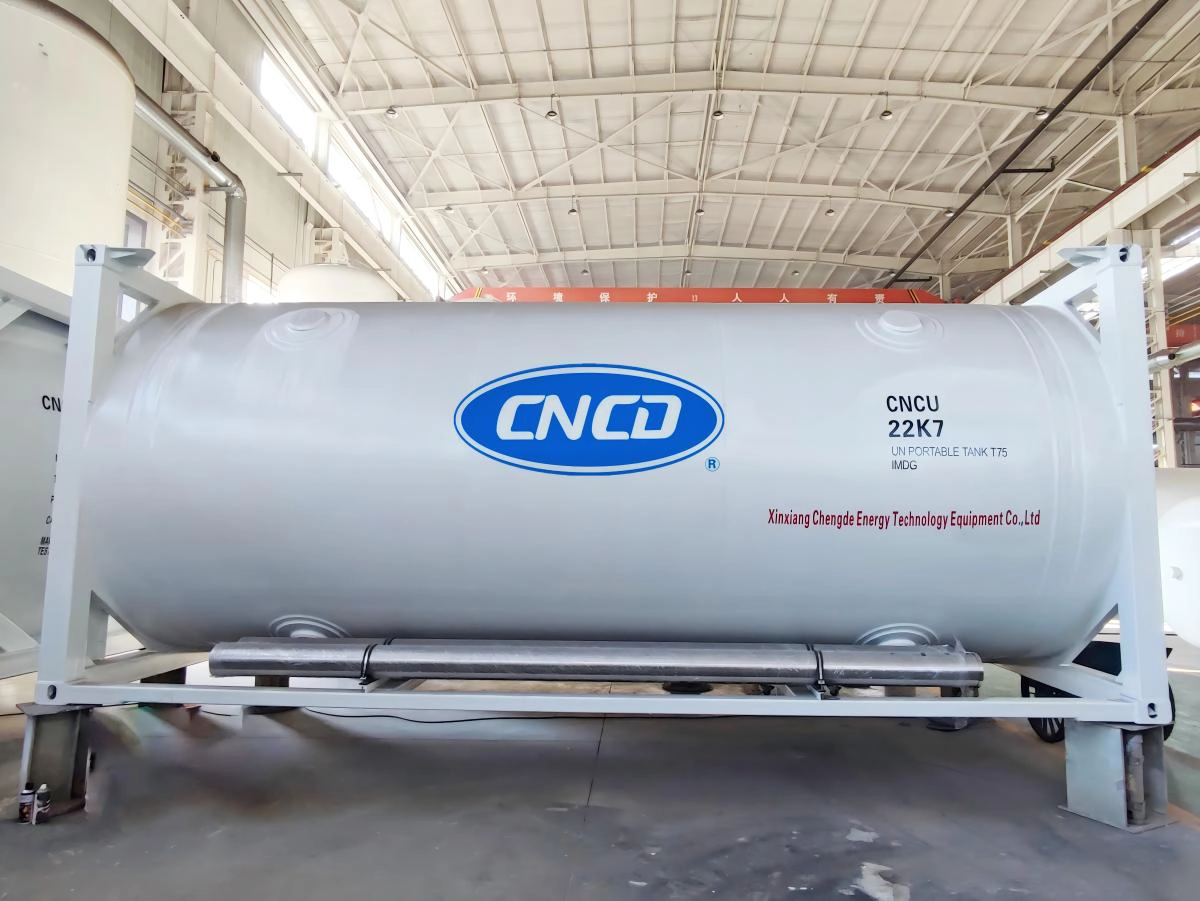








A 20ft cryogenic liquid nitrogen ISO tank container is a specialized type of storage and transportation unit designed to safely handle and transport liquid nitrogen at extremely low temperatures. Here are some key features and details about such containers:
Key Features:
Insulation: These tanks are heavily insulated to maintain the cryogenic temperatures required to keep nitrogen in its liquid state, typically around -196°C (-321°F).
Material: Constructed from high-grade stainless steel or other materials that can withstand extreme cold and prevent thermal expansion and contraction issues.
Capacity: A 20ft ISO tank container can hold a significant volume of liquid nitrogen, often ranging from 10,000 to 20,000 liters, depending on the design and insulation.
Safety Features: Equipped with pressure relief valves, safety vents, and other mechanisms to handle the pressure build-up from the evaporation of liquid nitrogen.
ISO Standards: Compliant with International Organization for Standardization (ISO) standards, ensuring they can be used globally and are compatible with various transportation methods, including ships, trucks, and trains.
Portability: Designed to be easily transported and handled using standard ISO container handling equipment.
Applications:
Medical and Pharmaceutical: Used for storing and transporting biological samples, vaccines, and other medical supplies that require cryogenic temperatures.
Food Industry: For freezing and preserving food products.
Industrial: In various industrial processes that require cryogenic temperatures, such as metal treatment and chemical manufacturing.
Research and Development: In laboratories and research facilities for experiments and storage of sensitive materials.
Handling and Maintenance:
Regular Inspections: Regular checks for insulation integrity, pressure systems, and overall structural soundness.
Training: Personnel handling these containers should be trained in cryogenic safety and handling procedures.
Transportation: Must comply with international regulations for the transport of hazardous materials, such as those outlined by the International Maritime Organization (IMO) and the Department of Transportation (DOT).
Safety Considerations:
Ventilation: Ensure proper ventilation when handling liquid nitrogen to prevent the buildup of nitrogen gas, which can displace oxygen and pose a suffocation risk.
Protective Gear: Use appropriate personal protective equipment (PPE), including gloves and face shields, to protect against cold burns.
Emergency Procedures: Have clear emergency procedures in place for spills, leaks, or other incidents involving liquid nitrogen.
These containers are essential for industries that require the safe and efficient transport and storage of liquid nitrogen, ensuring that the substance remains at the necessary cryogenic temperatures throughout the supply chain.
 扫一扫咨询微信客服
扫一扫咨询微信客服